As the hazy, lazy days of summer come to a close, the New Horizons team released a brand new set of incredible images of a very atmospheric Pluto.
Can you believe the detail in these photos? Back-lit by the Sun, we see icy plains, rugged mountains, glacier-cut terrain and multiple layers of haze just like those on a steamy August afternoon.
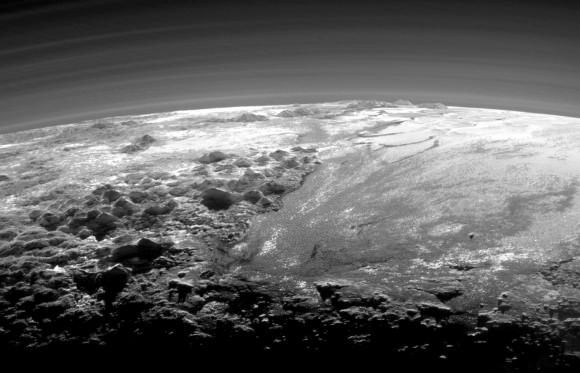
Credits: NASA/JHUAPL/SwRI)
The scene measures 780 miles (1,250 kilometers) across and was taken from a distance of 11,000 miles (18,000 km) on July 15 just after closest approach. Because backlighting highlights fine aerosols suspended in the atmosphere (think of seeing your breath on a cold winter day against the Sun), these photos show the amazing complexity of Pluto’s atmosphere with more than a dozen thin haze layers extending from near the ground to at least 60 miles (100 km) above the surface.
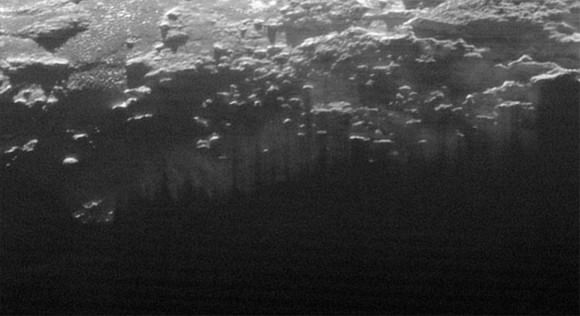
Credits: NASA/JHUAPL/SwRI
“This image really makes you feel you are there, at Pluto, surveying the landscape for yourself,” said New Horizons Principal Investigator Alan Stern in a press release today. “But this image is also a scientific bonanza, revealing new details about Pluto’s atmosphere, mountains, glaciers and plains.”
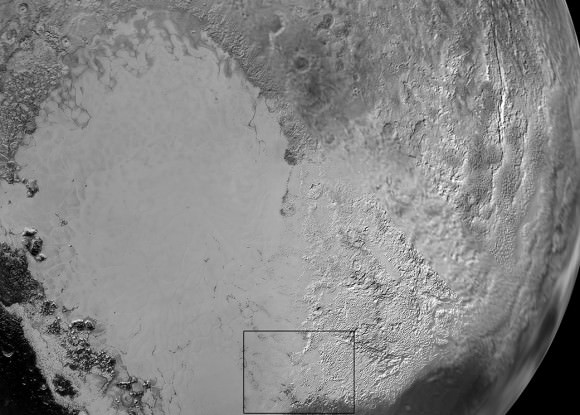
Credits: NASA/JHUAPL/SwRI
I find the hazes the most amazing aspect of the photos. They remind me of crepuscular rays, those beams of sunshine that shine between breaks in the clouds near sunset and sunrise. It chills and thrills me to the bone to see such earthly sights on a bitterly cold orb more than 3 billion miles from home.
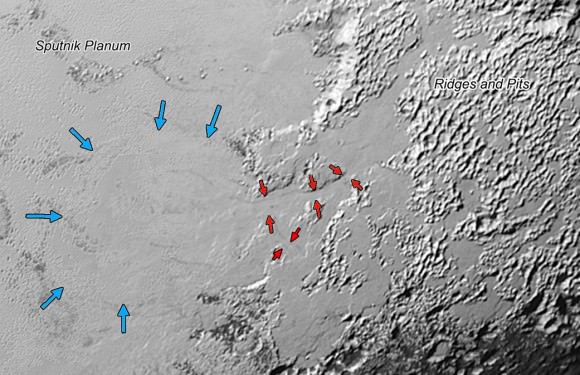
Credits: NASA/JHUAPL/SwRI
But that’s not all that’s close to our hearts on Pluto. The photos reveal nitrogen ice apparently flowing downhill from mountainous highlands into a broad, smooth basin. Combined with other recently downloaded pictures, this new image (above) provides evidence for a remarkably Earth-like “hydrological” cycle on Pluto – but involving soft and exotic ices, including nitrogen, rather than water ice.
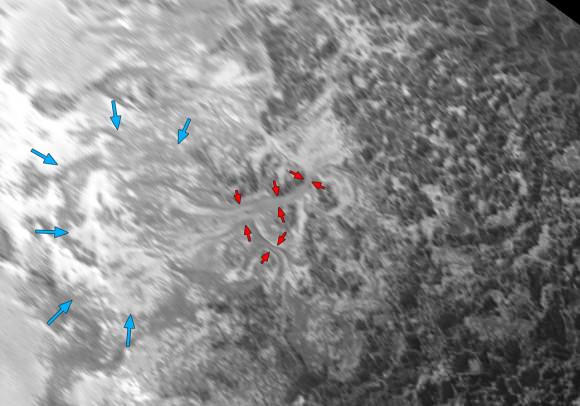
Credits: NASA/JHUAPL/SwRI
Nitrogen ice in the vast, relatively smooth Sputnik Planum may have vaporized in sunlight and then redeposited as ice in the bright, rugged region to its east. The new Ralph imager panorama also reveals glaciers flowing back from the blanketed mountain region into Sputnik Planum; these features are similar to the frozen streams on the margins of ice caps on Greenland and Antarctica.
Who knew that by going to Pluto we’d see such familiarity? But there you have it.

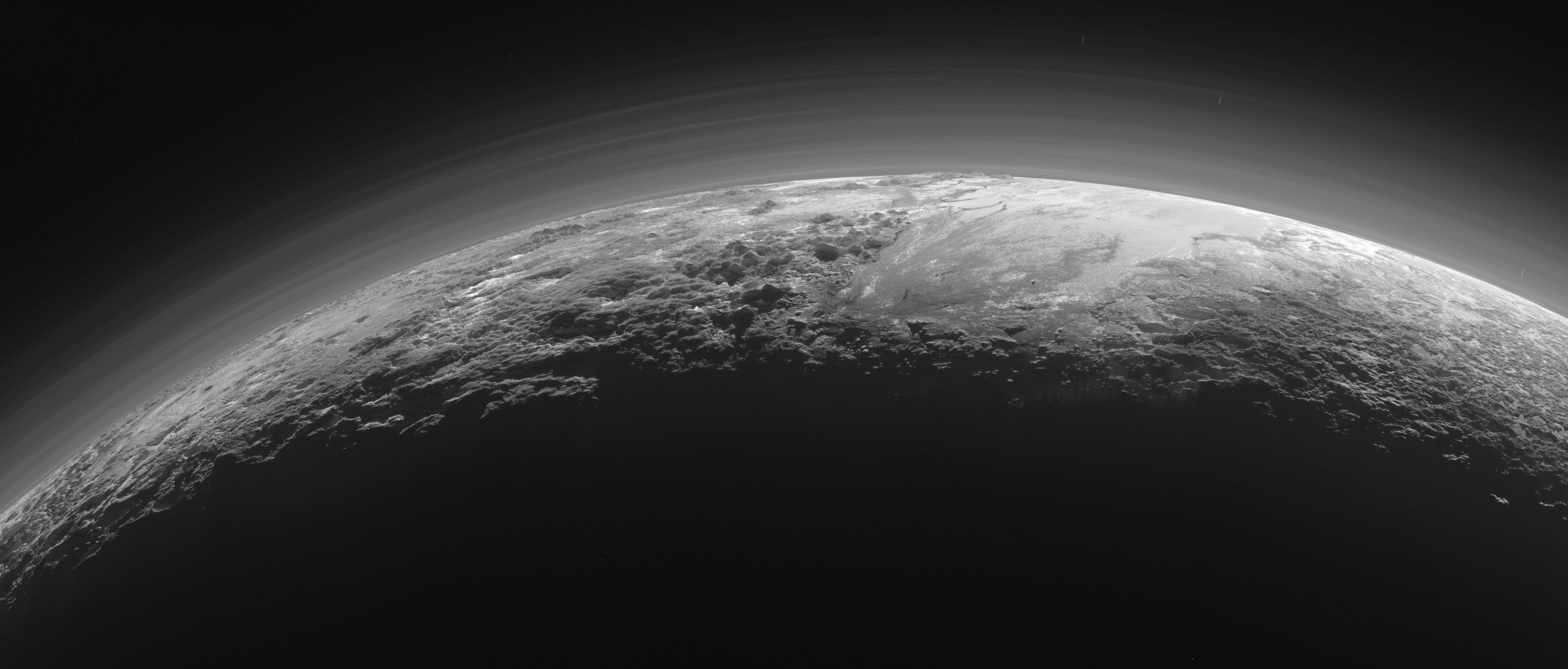
Sadly, I may have to stop working and just look at this.
You know, it’s interesting how all those fanciful sci-fi artist’s impressions of the surface of Pluto seem to be pretty close. The icy flows and majestic peaks!
Croc,
We would understand.
It’s called the “Pluto flu”. I’m still feeling a touch of it today. The valley glaciers, the translucent peaks, the prismatic crystalline ice fog, the cold terror of Sol in her distant majesty, the immensity of Charon hanging motionless forever, the ice dragons…
I think we need yet another category: just plain Pluto. Anything you call it doesn’t do it justice. Certainly not more beautiful than Earth, but as beautiful? Maybe.
Croc,
Nicely and poetically put. It’s a good thing to take time and let the wonder seep in.
WOW !! Thank you Bob I just knew you would be on top of this one as soon as I heard the news of the new photo downloads from New Horizons …These images are my New Favourites “Totally Awesome”
UFOs,
The striations – simply incredible.
There’s already an informally named, “Cthulhu Reggio”… I suggest naming that range, “The Mountains of Madness”. They appear to be a place in which Shoggoth might meander among black cyclopean corridors carved into the very living ice itself.